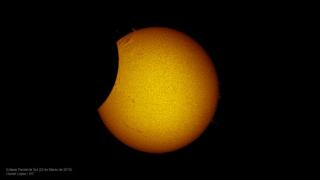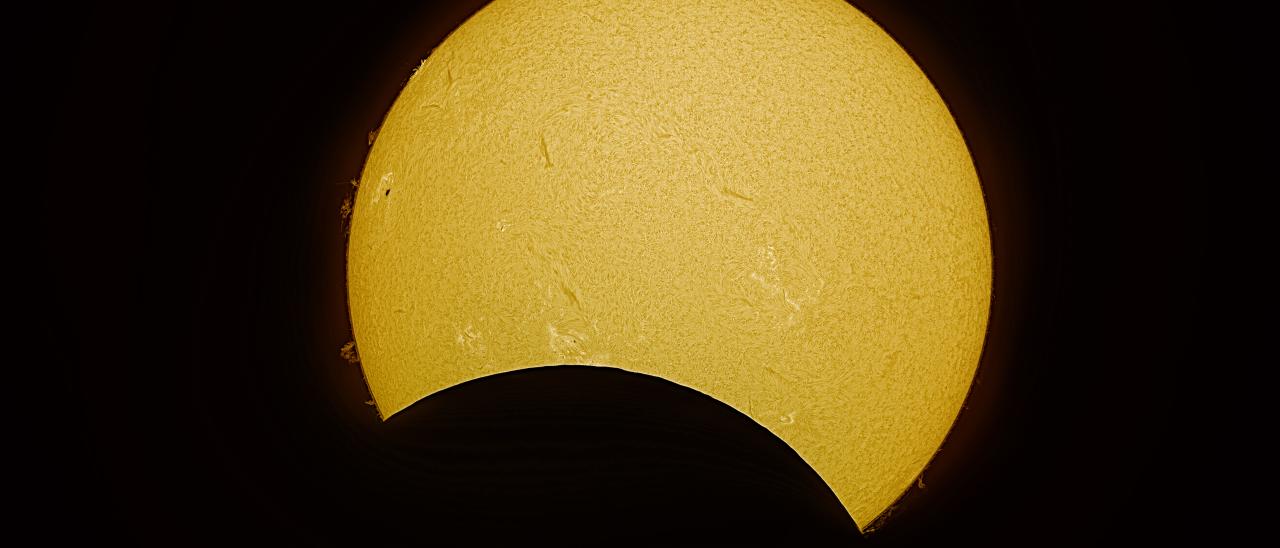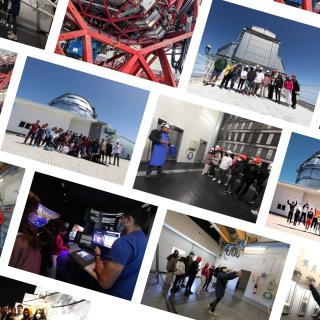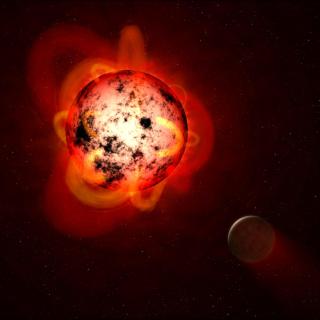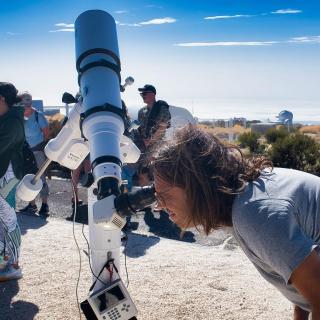This Saturday, 29 March 2025, the Instituto de Astrofísica de Canarias (IAC) was able to follow the partial solar eclipse from the Teide Observatory in Tenerife.
Although subtle to the naked eye, this eclipse was used by the IAC's outreach team to raise awareness of the phenomenon among a group of people from the ‘Friends of the IAC’ programme and IAC staff. At the same time, an observation was also made from the IAC Headquarters in La Laguna, which could be seen live on the centre's YouTube channel.
The eclipse began at 09:14 UT and ended at 10:56 UT, with its maximum at 10:03 UT. For just over an hour and a half, the Moon passed in front of the Sun, hiding part of its light and generating an astronomical phenomenon which, although it no longer represents a great scientific challenge as it has been extensively studied, is still today an opportunity to get closer to Astronomy and to the knowledge of our Universe.
What is a solar eclipse and how is it formed?
A solar eclipse occurs when the Moon is placed between the Earth and the Sun, casting its shadow on our planet. This shadow is divided into two clearly differentiated zones: the umbra, which gives rise to a total eclipse (when the Moon completely covers the solar disc), and the penumbra, from which only a partial occultation of the Sun is observed. When the alignment is not perfect for a total eclipse, as it was on 29 March 2025, a partial eclipse occurs. Although today we clearly understand the mechanics of eclipses, for centuries these events generated awe, fear and myths in different cultures. Today, thanks to scientific knowledge, we can anticipate and enjoy them as a unique experience of connection with the cosmos.
The Canary Islands was the first autonomous community in Spain in which the eclipse of this Saturday began to be visible. For example, the moon covered 24 % of the solar disc on La Palma, 22 % on Tenerife and 19 % on Lanzarote. The phenomenon took place over a period of just over an hour and a half.
📸 Images and videos of the eclipse and the outreach activity
